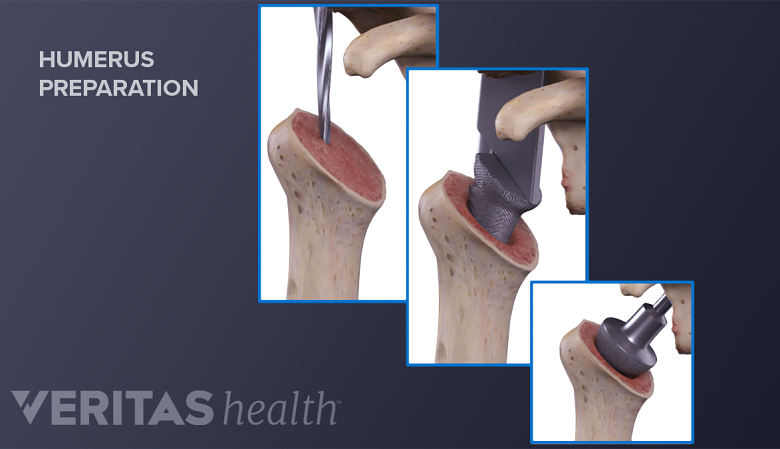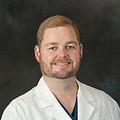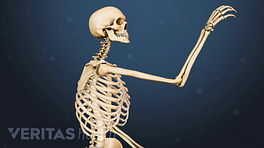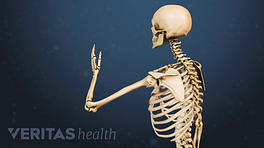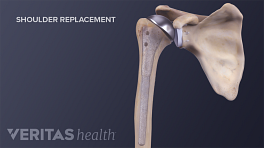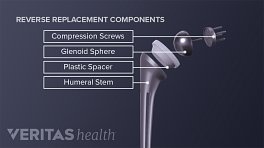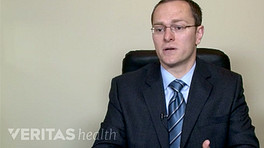Below is a step-by-step description of a typical reverse shoulder replacement surgery. The surgery typically lasts about 1.5 to 3 hours.
During the reverse shoulder replacement, the humeral component is secured by a shaft that runs down into the humerus.
Surgical procedures can vary depending on the patient’s needs and the surgeon’s preferences, but generally the steps are as follows:
- Body temperature, blood pressure, heart rate, and oxygenation levels are are checked before surgery. The shoulder scheduled for surgery will be marked with pen to ensure that the correct shoulder is operated on.
- Anesthesia is administered. Most patient receive general anesthesia (are put to sleep). Some patients also receive regional anesthesia in the shoulder, so the shoulder and arm may be numb when the patient wakes up from the general anesthesia. The type of anesthesia a patient will receive is decided well ahead of the surgery.
In This Article:
- Choosing Reverse Shoulder Replacement
- Who Gets Reverse Shoulder Replacement?
- Reverse Shoulder Replacement Surgical Procedure
- Reverse Shoulder Replacement Risks and Complications
- Beginning at the front, top of the shoulder, the surgeon makes an curved incision about 6 inches long. The surgeon then cuts through deeper tissue, including one of the rotator cuff tendons, to access the shoulder joint.
- The rounded top of the upper arm bone, called the humeral head, is dislocated from the socket of the scapula, or glenoid.
- The surgeon will examine the area just below the humeral head, called the humeral neck. The surgeon uses a tool called an osteotome to remove any bone spurs that may have developed on the humeral neck as the result of arthritis.
- The surgeon uses a bone saw to remove the humeral head.
- The surgeon prepares the humerus bone for the new socket, called a humeral cup. A humeral stem—a narrow, tapered metal shaft—fits several inches down inside the humerus. The top of this stem is designed to hold the humeral cup. The humeral cup is typically made of polyethelyne and has a smooth, slightly concave design to facilitate movement with the new ball prosthesis.
- The surgeon shapes the the natural shoulder socket (glenoid) to prepare it for its ball-shaped prosthesis, called a glenosphere.
- The prosthetics may be adhered to the natural bone with fast-acting bone cement or they may be cementless (sometimes called “press fit”) components. The bone cement takes about 10 minutes to set.
- The humeral cup is secured onto the humeral stem and the glenosphere is attached to the scapula.
- The exact shape and size of the prosthetic components will be selected based on the surgeon’s pre-surgical planning and observations during surgery. Typically, a surgeon uses trial components during surgery to test ease of shoulder movement and risk of dislocation. Once the surgeon has identified compenents that offer the best possible fit, he or she will secure the final components in place.
- The surgeon inserts the new ball into the new socket, and does a final check for ease of movement and dislocation by rotating the upper arm in different directions.
- The muscle and other soft tissues that were cut are repaired and the skin incision is stitched or stapled back together.
After surgery, a patient may be taken to a recovery room for observation while the surgical anesthesia wears off. Afterward, the patient may be taken to a hospital room for the remainder of his or her hospital stay.
Many patients spend one or two nights in the hospital before being discharged, though this can vary depending on circumstances.
